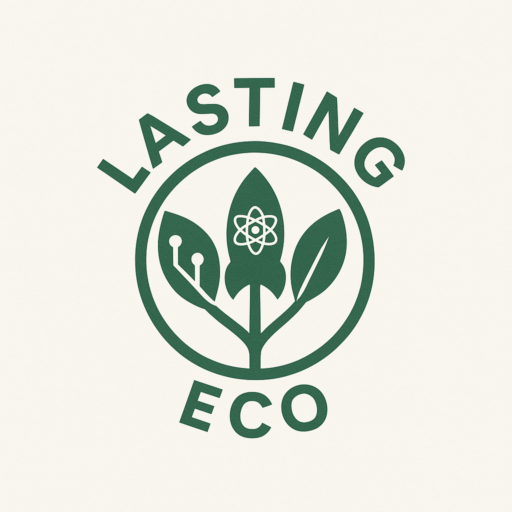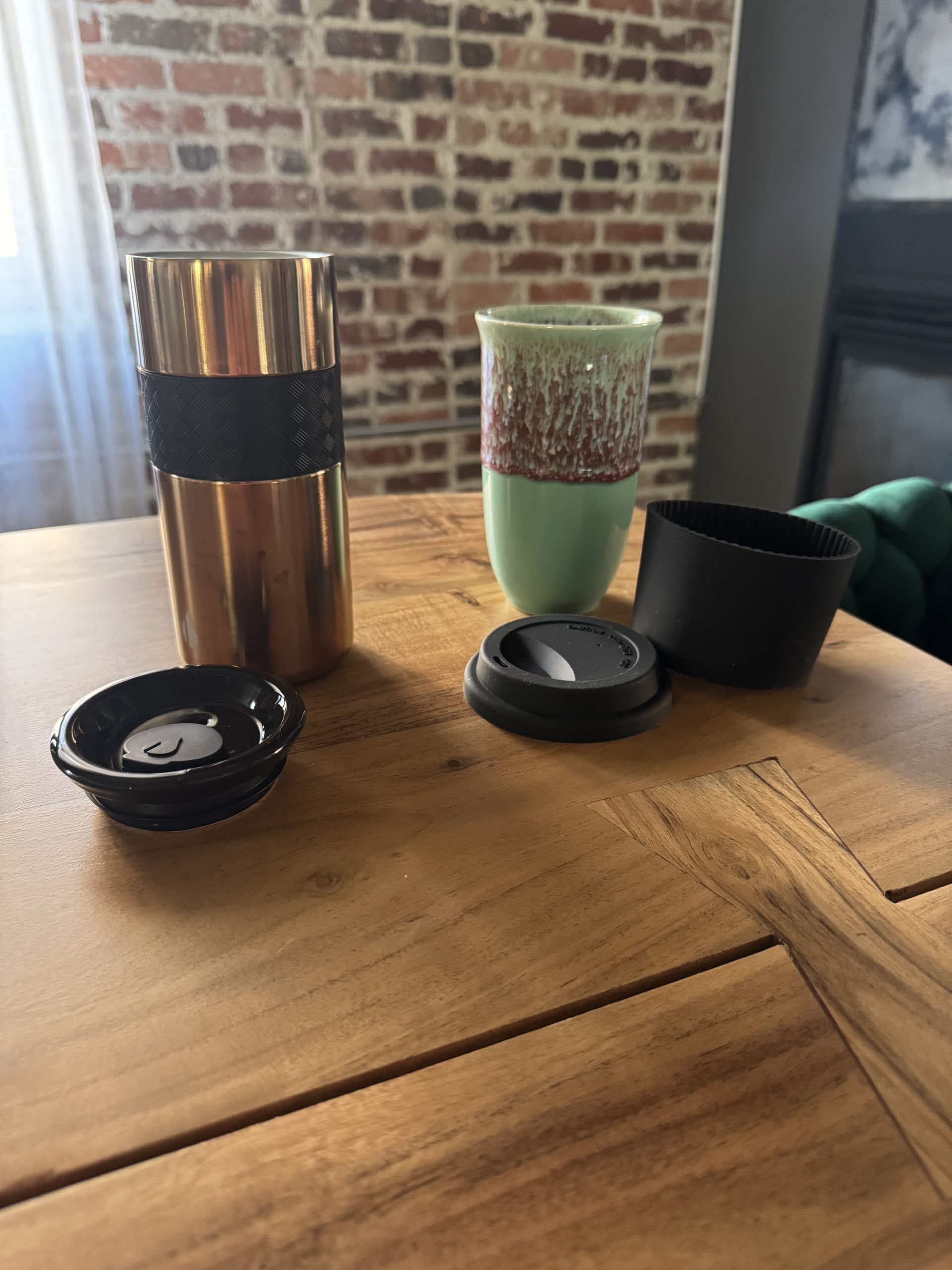When it comes to travel coffee mugs, most people instinctively reach for brands like Yeti or grab a reusable option from Starbucks. These mugs promise durability, insulation, and convenience, but there’s an invisible cost most buyers miss: plastic exposure.
If you’re serious about your health, your coffee, and the planet, it’s time to step up your game.
In this guide, we’ll compare the mugs you already know, like Starbucks and Yeti, against smarter alternatives made from stainless steel, ceramic, and food-grade silicone. We’ll show you why these plastic-free designs are winning on all fronts: safety, taste, and sustainability.
🔍 Why Plastic-Free Matters
Even “BPA-free” plastics leach endocrine-disrupting chemicals when exposed to heat or repeated wear. Studies from the National Institute of Environmental Health Sciences and Environmental Health Perspectives show how even low-dose exposure to BPA substitutes like BPS and BPF can disrupt hormone function, immunity, and metabolism over time.
Deep Dive: How Plastic Is Harming Your Body (Part 1 of 2)
Deep Dive: How to Cut Plastic Exposure (Part 2 of 2)
Single-use to-go cups at most coffee shops, including those labeled as paper, are lined with a thin layer of plastic to prevent leaks. When exposed to heat, these liners leach chemicals into your drink, and contribute to daily microplastics intake. This makes a strong case for switching to truly reusable, plastic-free options like stainless steel, ceramic, and silicone mugs. Choosing plastic-free isn’t just Eco-conscious, it’s a long-term investment in your body’s health.
The Starbucks Travel Mug: Convenience with Hidden Costs
Starbucks-branded travel mugs are widely available and easy to pick up while grabbing your morning latte. However, most of their mugs are primarily made of plastic, either fully or as components in the lid, straw, sealing mechanism, or handle if they have one. While the convenience factor is high, the health and sustainability risks are alarming.
Scientific Insight: Plastic, especially when heated, can leach chemicals like Bisphenol A (BPA) or its substitutes (BPS, BPF) into your drink. Additionally, Heat, acidity (like coffee), and fat content (milk or cream) can accelerate this chemical migration.
Bottom Line: Traditional Starbucks mugs are better than single-use cups, but they may still expose you to unwanted chemicals over time.
Yeti Mugs: Durable, But Not Perfect
Yeti has a reputation for ruggedness, and their stainless-steel mugs are undeniably tough. They’re made from kitchen-grade 18/8 stainless steel and are BPA-free. However, many Yeti products have plastic lids, and unless you’re careful, repeated heat exposure or dish washing can cause micro-degradation of those lids.
Scientific Insight: While stainless steel itself is very stable, plastic lids remain a potential source of micro plastic shedding and chemical exposure. Additionally, if low-grade stainless is used (not typical with Yeti, but common in cheaper brands), nickel and chromium leaching can occur, especially with acidic beverages like coffee. Yeti’s quality control generally prevents this issue, but it’s something to monitor across brands.
Bottom Line: Yeti mugs are a big step up in durability and safety compared to most plastic-heavy options, but the plastic lid is a weak link and not sustainable.
The New Standard: Stainless, Ceramic, and Silicone Mugs
Enter the new generation: mugs made entirely (or primarily) from stainless steel, ceramic, and food-grade silicone. I’ve recently switched to using these, and the difference is striking, not just in health, but in taste and experience.
- Stainless Steel (Interior and Exterior): When lined with high-quality, food-grade stainless, there’s almost no risk of anything leaching into your beverage. It preserves temperature exceptionally well without flavor taint.
- Ceramic: Fully ceramic mugs offer one of the cleanest drinking experiences available. Because they are made without metal or plastic, they don’t leach chemicals, alter taste, or transfer heat as aggressively. High-quality ceramic is naturally inert, non-reactive, and easy to clean. However, not all ceramic is created equal, some lower-cost options may contain lead or cadmium in the glaze.
- Food-Grade Silicone (Lids and Sleeves): Silicone, when properly formulated and cured, is extremely stable. It doesn’t leach harmful chemicals at normal use temperatures, and it’s inert to acids and fats. Ideally make sure it’s platinum-cured silicone (safer and cleaner) rather than peroxide-cured.
Scientific Insight: Ceramic surfaces prevent metal ion transfer, and platinum-cured silicone is one of the most inert flexible materials available today. Both drastically reduce risk of contamination or taste alteration compared to traditional plastics or even exposed stainless.
Bottom Line: Mugs made from high-quality stainless, ceramic, and platinum-cured silicone are the new gold standard for anyone serious about health, flavor, and sustainability.
Final Verdict
If you’re still sipping from an old Starbucks travel mug, it’s time for an upgrade. While Yeti gets points for durability, the future belongs to designs that combine stainless steel, ceramic coatings, and food-grade silicone. They’re better for your body, better for your coffee, and better for the planet.
Don’t wait to detox your coffee routine. These two mugs are the best we’ve found after testing dozens; no plastic, no toxins, just clean coffee.
- Option 1: Stainless Steel Mug with Ceramic and Silicone Lid
- Option 2: Nice Ceramic and Silicone Combo
Here’s a top down picture of the 2 mugs side by side.

Key Takeaways:
- Avoid heated plastics whenever possible, even “BPA-free” ones.
- Look for platinum-cured silicone and high-grade stainless steel.
- Ceramic coatings provide the cleanest flavor profile when tested for food safety.
Ready to taste the difference and protect your health?
Don’t miss out:
- Subscribe to the Lasting Eco Newsletter for more science-backed insights and smarter living tips!

